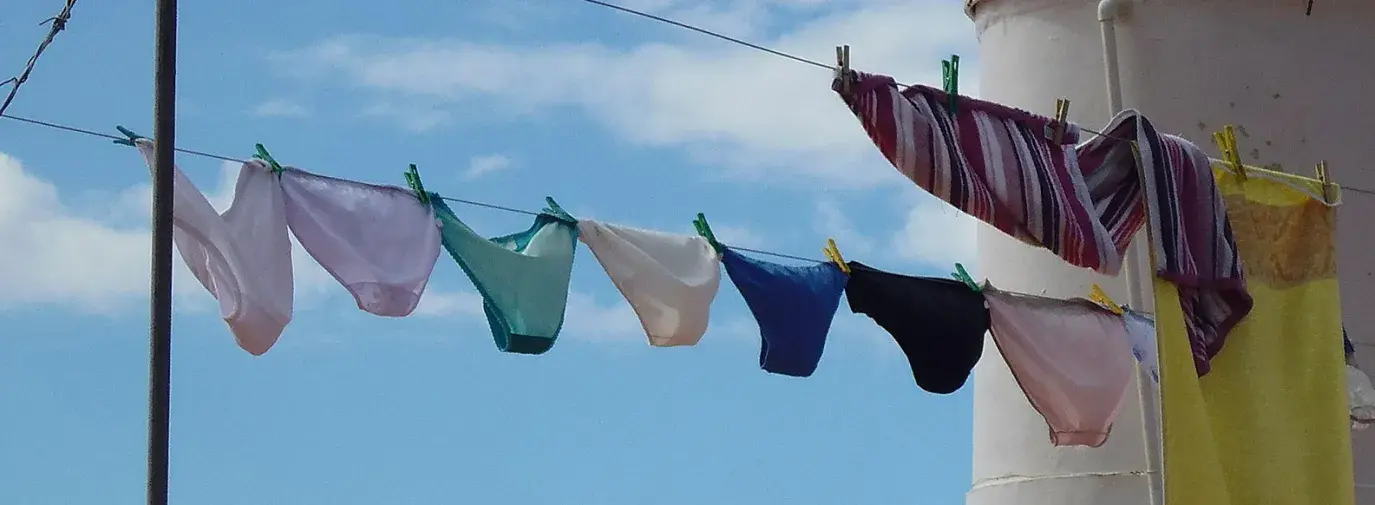
Underwear is just one of those things people put on without thinking in depth about the product. Does it cover everything that it needs to cover? Does it fit properly and not rub or chafe? If the underwear fulfills those requirements, wearers are typically satisfied. As a whole, most people do not think about where their underwear came from or how it was made. That should change.
“There’s a health aspect to it all,” says Jeff Garner, designer of the Prophetik high-end clothing line. Garner recently released a line of men and women’s intimate wear called Jeff Garner Intimates. “For example, formaldehyde is used [on clothing] to set dyes that offgas. Some of that can get on us and get into the water supply when you wash it.”
Formaldehyde is a known carcinogen.
As detailed in the article "The Road to Toxic Clothing," manufacturers may apply a whole host of chemicals to clothing, including underwear—to brightly color it, wash it, make it wrinkle-, pest- and stain-resistant or water- and flame-repellent. Those chemicals are making workers and their communities sick.
Conventional clothing—particularly underwear that sits right on the skin and on particularly vulnerable parts of the body—may also not be good for the wearer. While more studies need to be done to show the health impacts of chemical residues
left on clothing when we buy it and after we put it through the washer, studies from Greenpeace International show that some harmful chemicals do remain behind.
Organic Underwear: Better Fabrics, Fewer Toxins
Here’s what to look for when you shop for underwear:
Natural Fabrics: Cotton underwear is the most commonly worn undergarment material for a number of reasons. For one thing, it’s easily available in most stores. It wicks moisture away from the body. It’s also comfortable. Most of the cotton underwear sold in stores is made of conventional cotton, which is usually genetically modified and grown and processed with a number of chemicals, including chlorine bleach. In fact, around 25 percent of the world’s insecticides and more than 10 percent of the world’s pesticides are sprayed on cotton, according to the Organic Trade Association (OTA). Cotton is also one of the heaviest water users among agricultural crops,states OTA. So what’s the alternative to conventional cotton undergarments? Many companies sell sustainable and organic underwear in a variety of eco-materials—including certified organic cotton, bamboo lyocell, hemp, organic soy, peace silk, and recycled fabrics.
Less Toxic: To ensure that companies avoid the most toxic chemicals throughout the supply chain—from dyes to washes to finishes—look for underwear certified through the Global Organic Textile Standard (GOTS). Keep in mind that smaller companies may not be able to afford certification, so they may advertise as GOTS-compliant. In their case, look for Green America Green Business Network® Certification (greenpages.org). If the garments are dyed, look for companies that use low-impact and eco-friendly, either water-based, vegetable-based, or clay dyes. Some may even obtain GOTS certification for their dyes.
Fair Labor: In addition, look for underwear made under the fair trade system, to guarantee that workers earned a living wage in sweatshop-free factories. For undies made at home, you can’t go wrong with a deep green company—like those certified by Green America—that keeps its manufacturing in the US and is transparent about the location of its factories.
Buy Green: Finding underwear that is good for the body as well as the Earth is just as easy as buying conventional underwear. But with organic and sustainable underwear, you’ll have a much better idea how and where your undergarments are made, what the people who made them were exposed to, and what you are putting on their bodies. And, as an added bonus, underwear made from 100 percent certified organic natural fibers like cotton or hemp is biodegradable, so worn-out pairs can go in the compost pile rather than in the trash.
Visit greenpages.org to search for companies that offer eco-friendly and organic underwear and are members of Green America’s Green Business Network.







